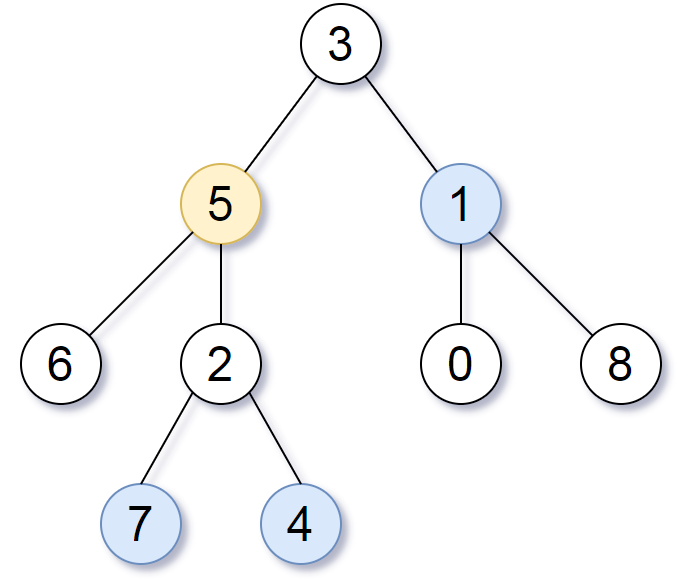We are given a binary tree (with root node root), a target node, and an integer value K.
Return a list of the values of all nodes that have a distance K from the target node. The answer can be returned in any order.
Example 1:
Input: root = [3,5,1,6,2,0,8,null,null,7,4], target = 5, K = 2
Output: [7,4,1]
Explanation:
The nodes that are a distance 2 from the target node (with value 5)
have values 7, 4, and 1.

Note that the inputs "root" and "target" are actually TreeNodes.
The descriptions of the inputs above are just serializations of these objects.
Note:
The given tree is non-empty.
Each node in the tree has unique values 0 <= node.val <= 500.
The target node is a node in the tree.
0 <= K <= 1000.
思路:将二叉树转换为无向图,然后进行dfs记录深度。 注意,对无向图进行遍历的时候要记录父节点,又不会有重复。
/**
* Definition for a binary tree node.
* struct TreeNode {
* int val;
* TreeNode *left;
* TreeNode *right;
* TreeNode(int x) : val(x), left(NULL), right(NULL) {}
* };
*/
class Solution {
public:
map<int, vector<int>> edge;
vector<int> ans;
void dfs(TreeNode* root) {
if (root == nullptr) return;
if (root->left != nullptr) {
dfs(root->left);
edge[root->val].push_back(root->left->val);
edge[root->left->val].push_back(root->val);
}
if (root->right != nullptr) {
dfs(root->right);
edge[root->val].push_back(root->right->val);
edge[root->right->val].push_back(root->val);
}
}
void dfs2(int u, int fa, int dep, int K) {
if (dep == K) {
ans.push_back(u);
return;
}
for (int i = 0; i < edge[u].size(); ++i) {
int v = edge[u][i];
if (v == fa) continue;
dfs2(v, u, dep+1, K);
}
}
vector<int> distanceK(TreeNode* root, TreeNode* target, int K) {
dfs(root);
dfs2(target->val, -1, 0, K);
return ans;
}
};